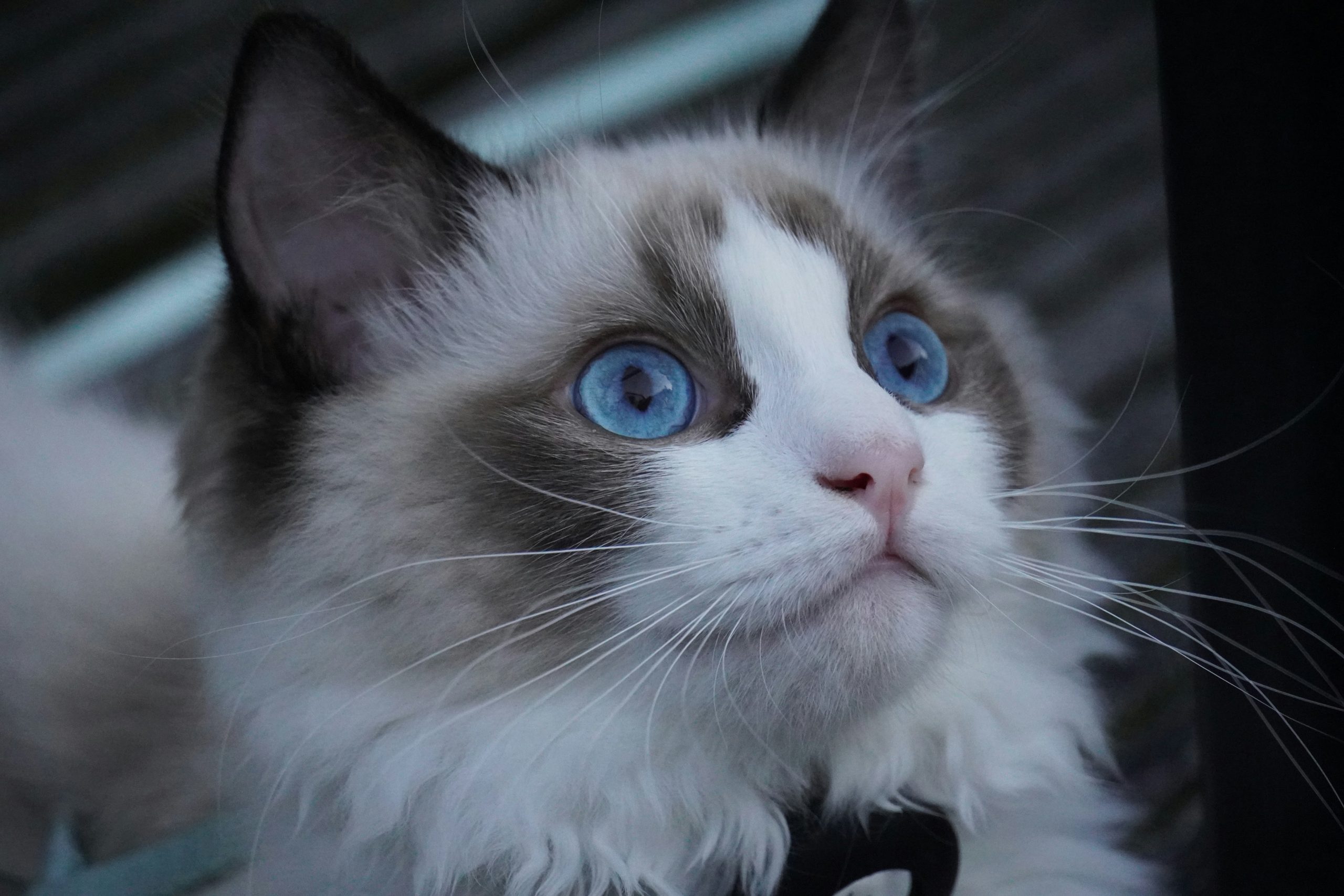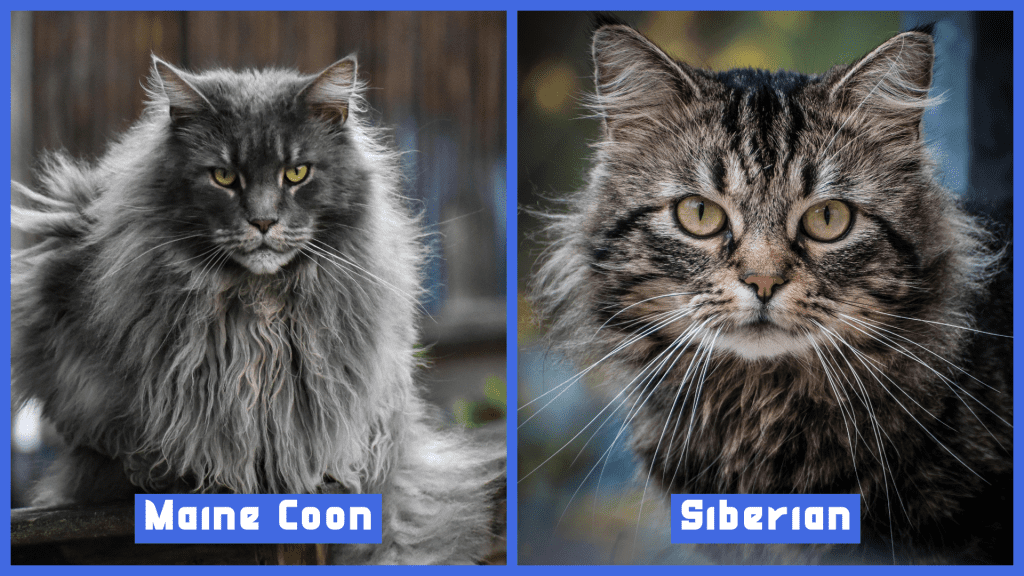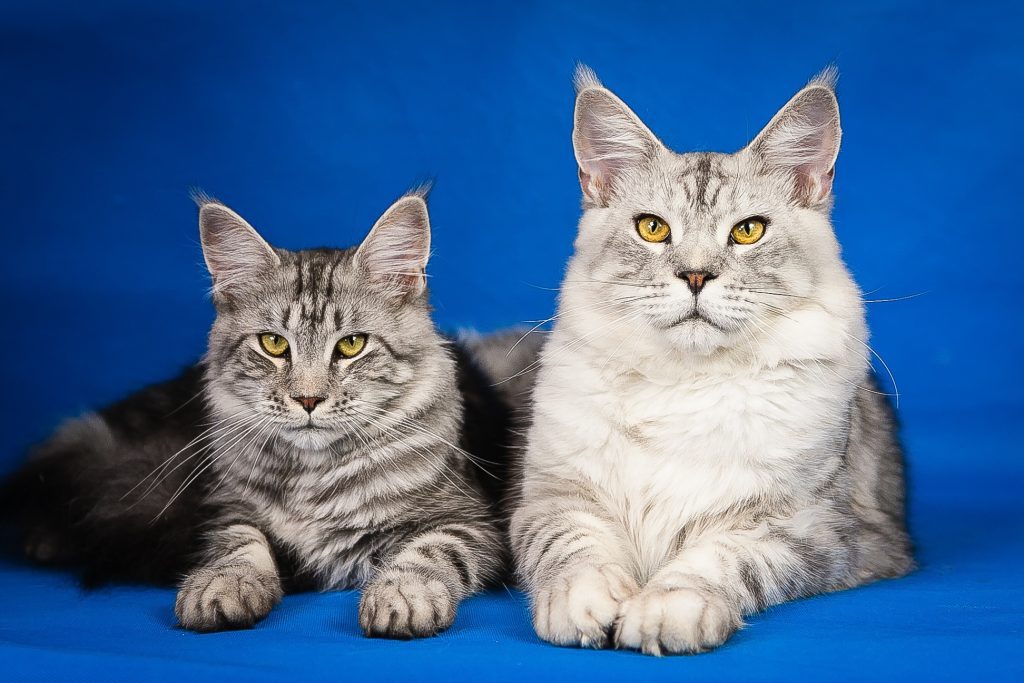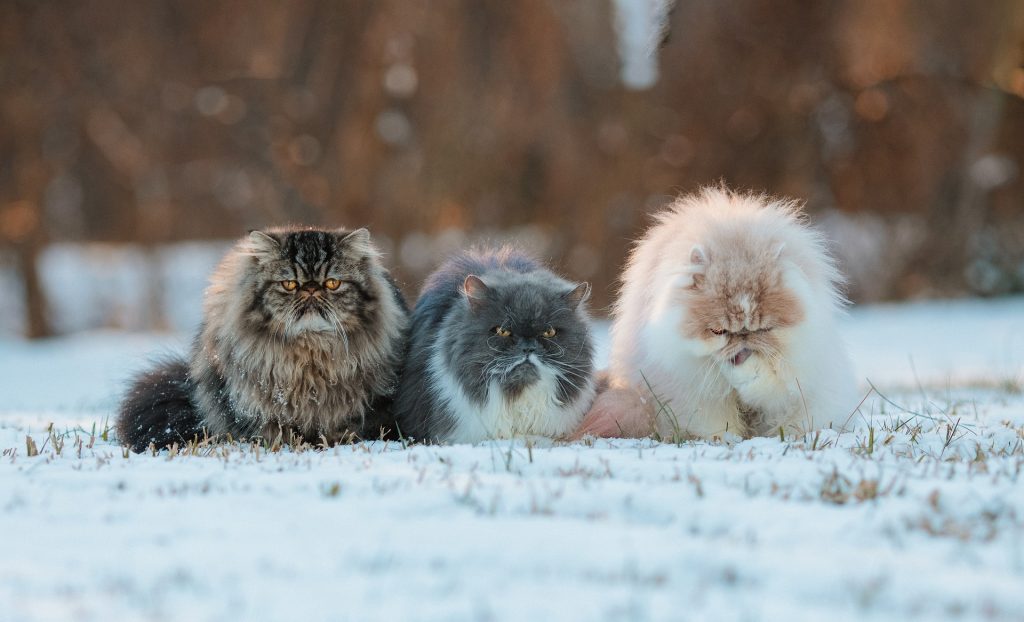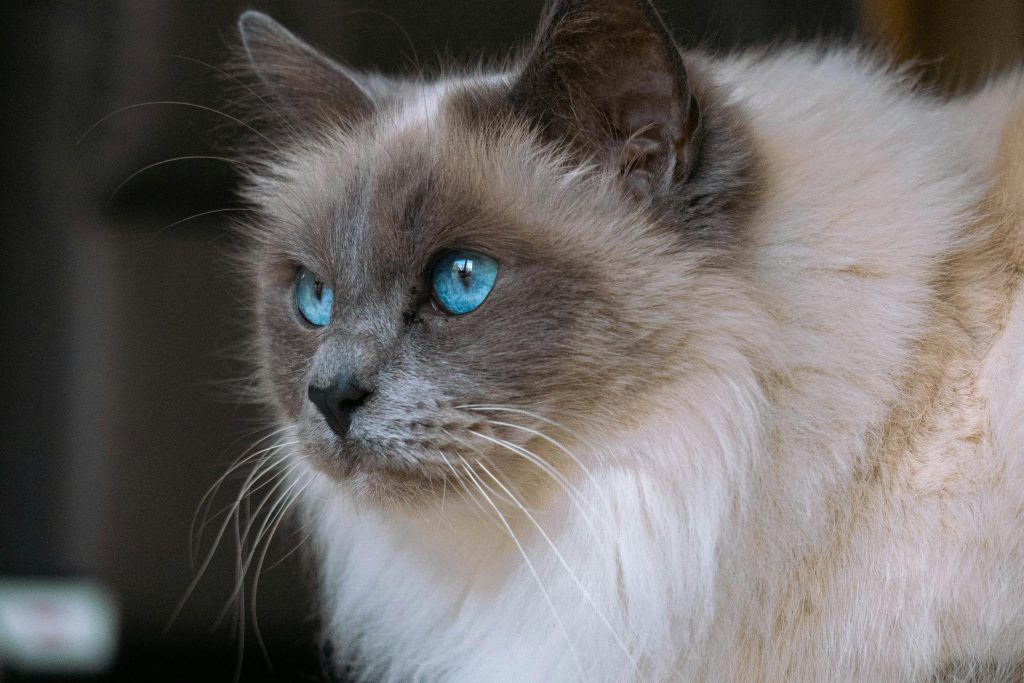Ragdolls come in point colors like seal, blue, chocolate, lilac, red, and cream — and in patterns such as colorpoint, mitted, bi-color, and the rare van.
These cats are renowned for their distinctive pointed coats, characterized by a temperature-sensitive gene that darkens the cooler areas (ears, face, paws, tail), while the body remains lighter. Colors shift over time so that a pale kitten may grow into a richly marked adult.
In this guide, you’ll discover every recognized Ragdoll color and pattern, why coats change, and what this means for buying, breeding, showing, and care. From classic Seal Point to rare Lilac, each shade tells its own story. Scroll down for our quick color chart (jump to it here) — your fast-track to becoming a true Ragdoll color expert.
Understanding Ragdoll Coat Genetics
Ragdoll colors aren’t random — they’re the result of three genetic layers working together:
- Base color — the pigment family (seal, blue, chocolate, lilac) that defines the depth of the points.
- Point pattern — produced by a temperature-sensitive form of the tyrosinase enzyme (TYR), so cooler areas like the ears, mask, and tail develop darker pigment (genetics primer).
- Modifiers — extra genes such as dilute (softens pigment), tortie (adds red or cream patches), and lynx (tabby striping) that overlay or alter the base.
For breeders, rare modifiers can be tempting, but pairing for color should always go hand-in-hand with health screening for HCM and PKD. For example, a seal point carries full pigment, yet the point gene keeps most of the body cream — you can often see the change by watching the nose leather darken as kittens mature. Every Ragdoll’s coat is a roadmap in progress — read the layers, and you’ll see the destination.
Ragdoll Cat Patterns Explained
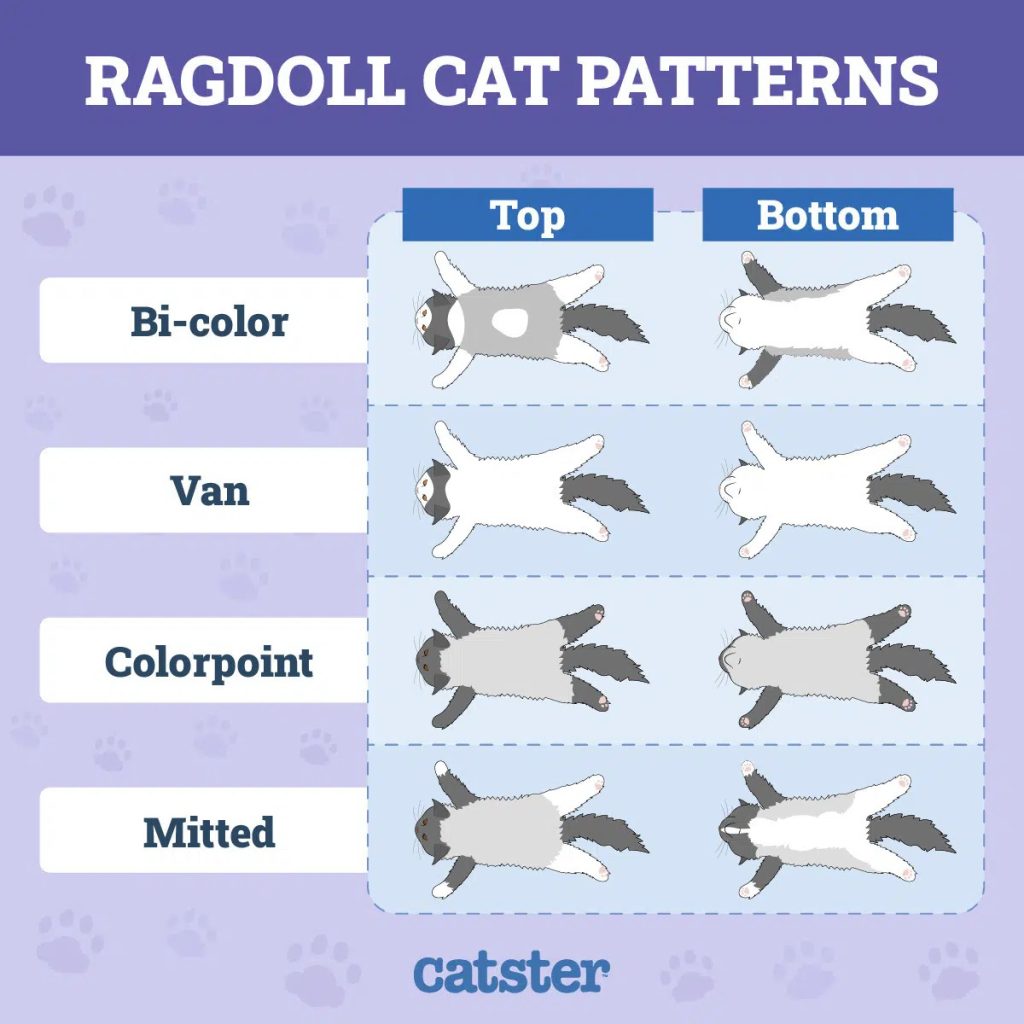
Ragdoll cat patterns define where color meets white — and they’re not just about looks. These markings can influence show eligibility, rarity, and even price. The four main patterns are Colorpoint, Mitted, Bi-color, and Van, each with precise registry definitions from TICA and CFA. Get these right, and you’ll avoid costly buying mistakes or mismatched breeding plans.
Colorpoint
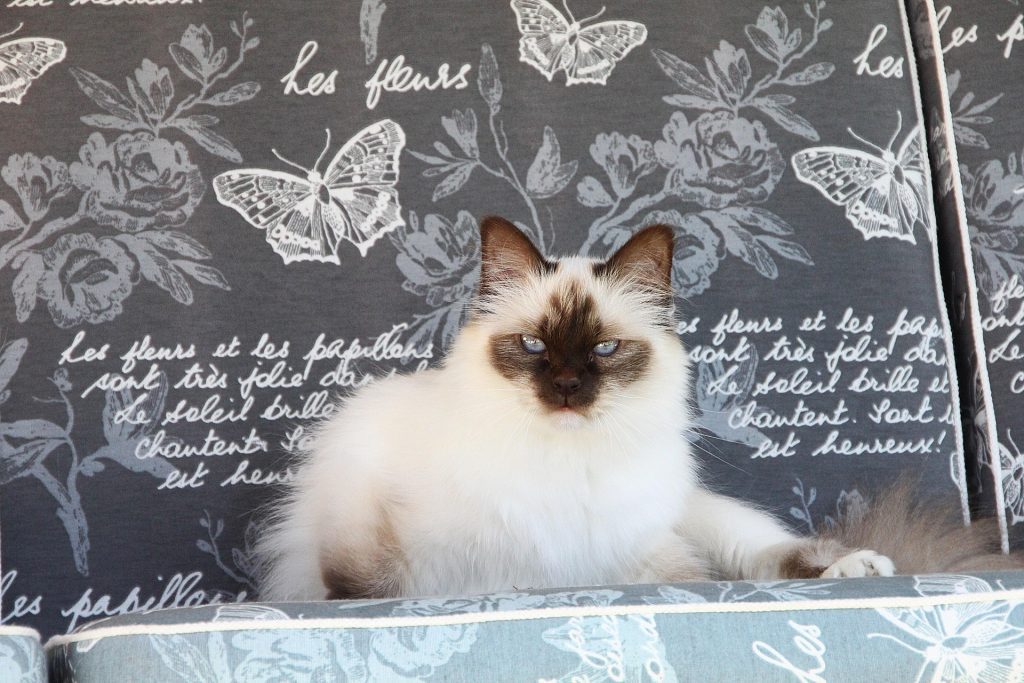
The classic Ragdoll look: darker “points” on the ears, face, legs, and tail, with no white spotting allowed under show standards. TICA notes that points must be clearly defined, with the body a lighter shade. To tell a young colorpoint from other patterns, check for a matching nose leather, even point color, and a chest or belly free of white. Kittens often start paler, with their points deepening as they mature.
Recommended Post
Mitted

Identified by white front paws (“mittens”), white hind legs up to the hock, and a white chin. A white belly stripe is desirable in shows. Per TICA, a mitted must also have colored points and body shading, but the mittens must be symmetrical. A common confusion: some mitted kittens look bi-color early — wait 12–16 weeks before final ID.
Recommended Post
Mitted Ragdoll Cat 2025 Guide – Features, Temperament, and Care Tips
Bi-color
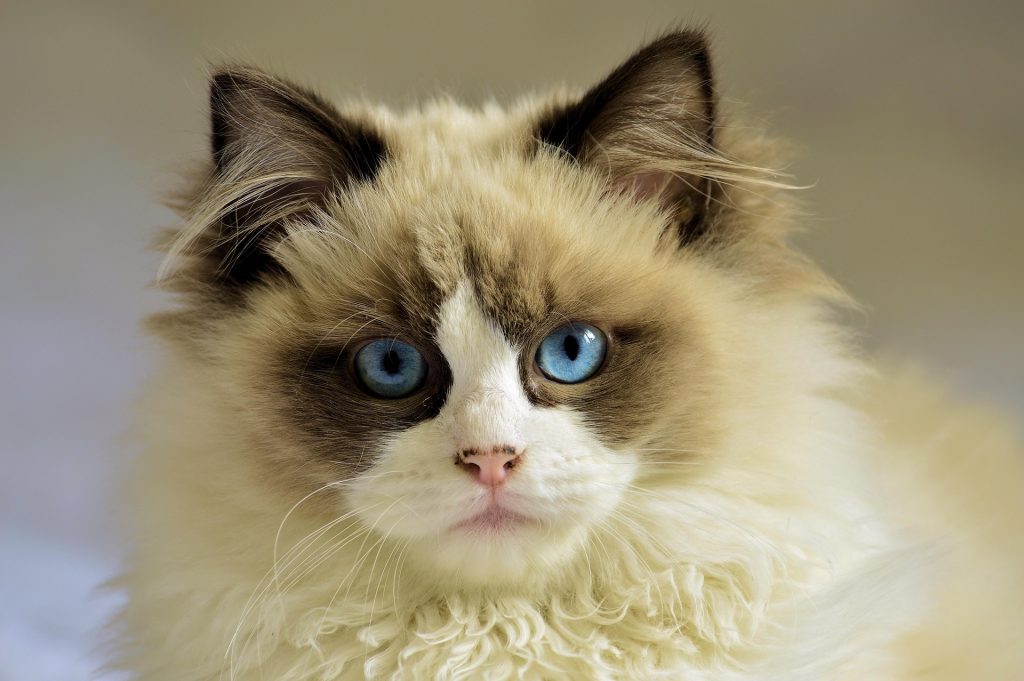
Characterized by an inverted white “V” on the face, white legs, and a white belly. The back may be solid or show small color patches. TICA’s ideal is a sharp, symmetrical “V” with no dark spotting in the white areas. Many pet buyers love bi-colors for their high-contrast look, and breeders often pair them with mitteds to produce mixed-pattern litters.
Recommended Post
Van
The rarest pattern — mostly white body with color only on the head (often as two separate patches) and tail. A few small body spots are allowed under TICA standards, but too much color reduces show desirability. Vans are challenging to breed consistently, making them prized by collectors and certain pet owners.
At a Glance
| Pattern | Breeder-est. Frequency | Notes |
| Colorpoint | Common | Stable genetics |
| Mitted | Common | High pet demand |
| Bi-color | Moderate | Popular in shows |
| Van | Rare | Breeding challenge |
All Standard Ragdoll Colors with Pictures
Ragdolls come in a small palette of classic point colors — each one changes with age and looks different depending on the pattern. Below, you’ll find every CFA and TICA and TICA-recognized shade, from seal to cream, with photo examples from kitten to adult, quick ID cues, and notes on rarity so you can confidently spot each hue in real life.
Seal
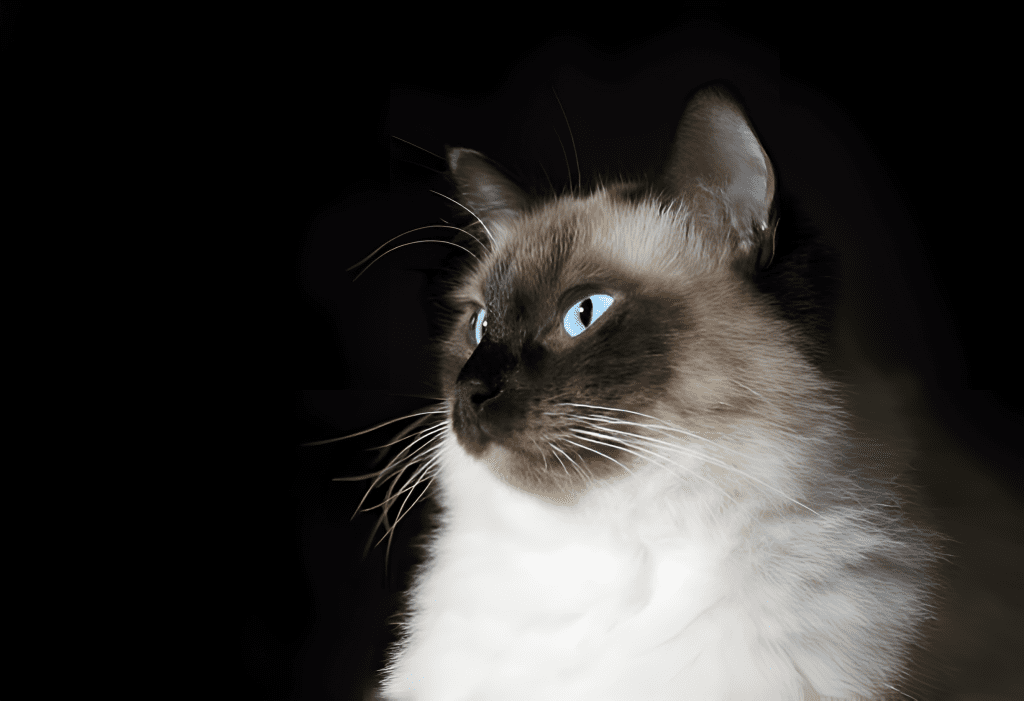
Deep, rich brown points against a warm beige-to-cream body — the “classic” Ragdoll look. The contrast is strongest in adults, while kittens start pale and darken over time. Seal points often keep their warmth even in cooler tones, with nose leather and paw pads usually dark brown to black, and eyes a deep blue.
Recommended Post
Seal Point (Brown) Ragdoll Cat Guide 2025 – Appearance, Traits
Blue
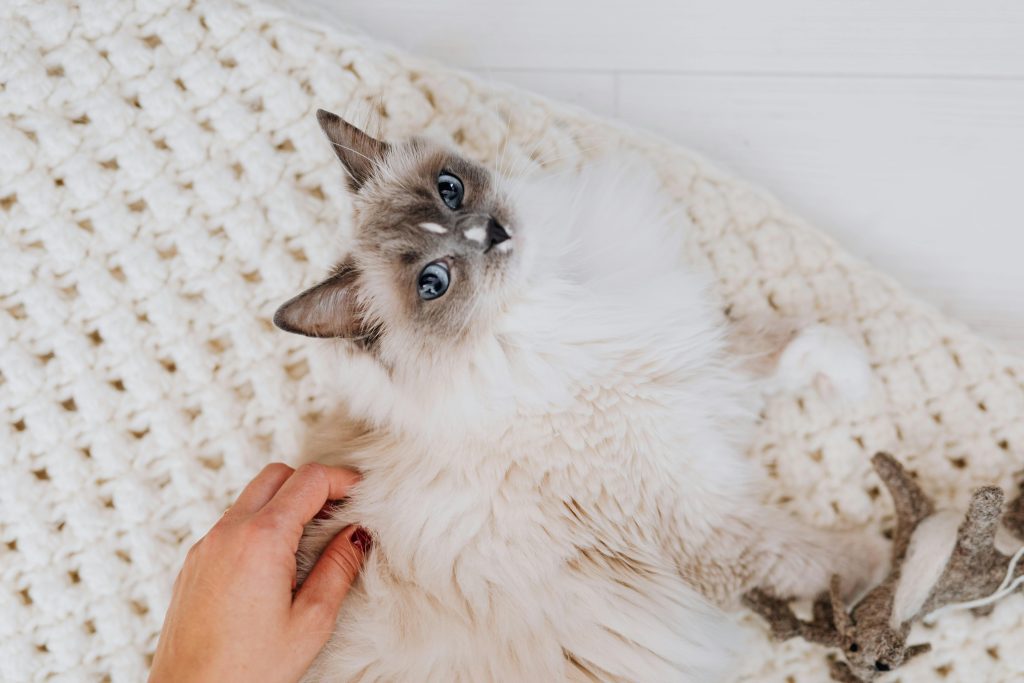
A cool-toned version of seal, blue points are slate to steel-grey with a soft silvery body. The cooler tone is especially clear in mitted and bicolor patterns, where the pale coat contrasts sharply with the bluish mask and tail. Nose leather and paw pads are typically slate gray — a quick way to tell blue from lilac, which has a pinkish cast.
Recommended Post
Blue Point Ragdoll Cat – Types, Characteristics, Price & Images
Chocolate

Warm milk-chocolate points paired with an ivory or creamy-white body. Lighter and softer than seal, chocolates can appear almost caramel in sunlight. Less common than seal or blue, making them a breeder’s prize in some regions.
Recommended Post
Chocolate Point Ragdoll Cats – The 2025 Ultimate Breed Guide
Lilac

The dilute of chocolate — frosty pinkish-grey points with a magnolia-white body. Lilacs have a dreamy, soft contrast that can make them look almost ethereal in photos. Often mistaken for blue, but warmer and rosier in tone.
Recommended Post
Lilac Point Ragdoll Cat Guide – Looks, Behavior, Care & More
Red (Flame)
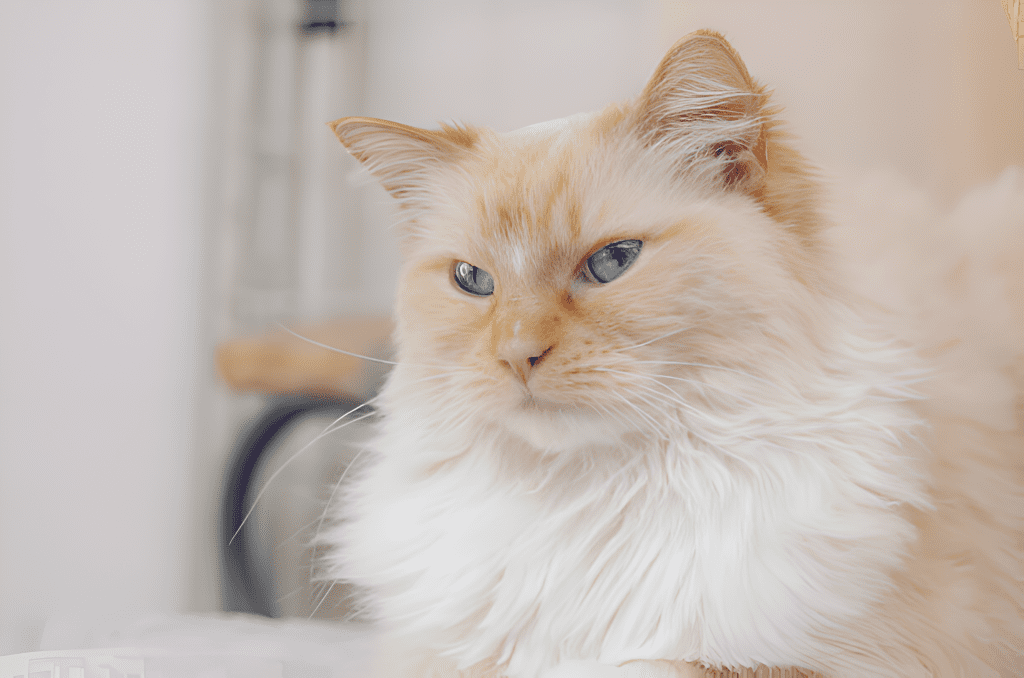
Vibrant orange to flame-red points, created by the sex-linked orange gene. Red males are usually solid in tone, while females may carry tortie patterns that mix red with darker shades. Body coats range from warm cream to pale gold.
Recommended Post
Cream
The dilute form of red — pastel cream points with an almost white body. The effect is subtle and gentle, making creams appear especially plush in natural light. Rare compared to red, especially in show-quality lines.
Special Variations & Non-Traditional Ragdoll Colors
Beyond the classic seal, blue, chocolate, lilac, red, and cream points lies a spectrum of special and non-traditional Ragdoll types — from mink and sepia coats to lynx and tortie overlays, tortie-lynx mixes, and even solid or blue-eyed white ragdoll cats.
These can be striking, but registry rules vary (TICA now recognizes minks; other registries differ — always check your own). Mink kittens often show color earlier and may have aqua eyes rather than deep blue. When pursuing rare colors, pair your search with health safeguards such as HCM echo and PKD testing, and request clear pedigrees from breeders.
Lynx Ragdolls (Tabby Overlay)
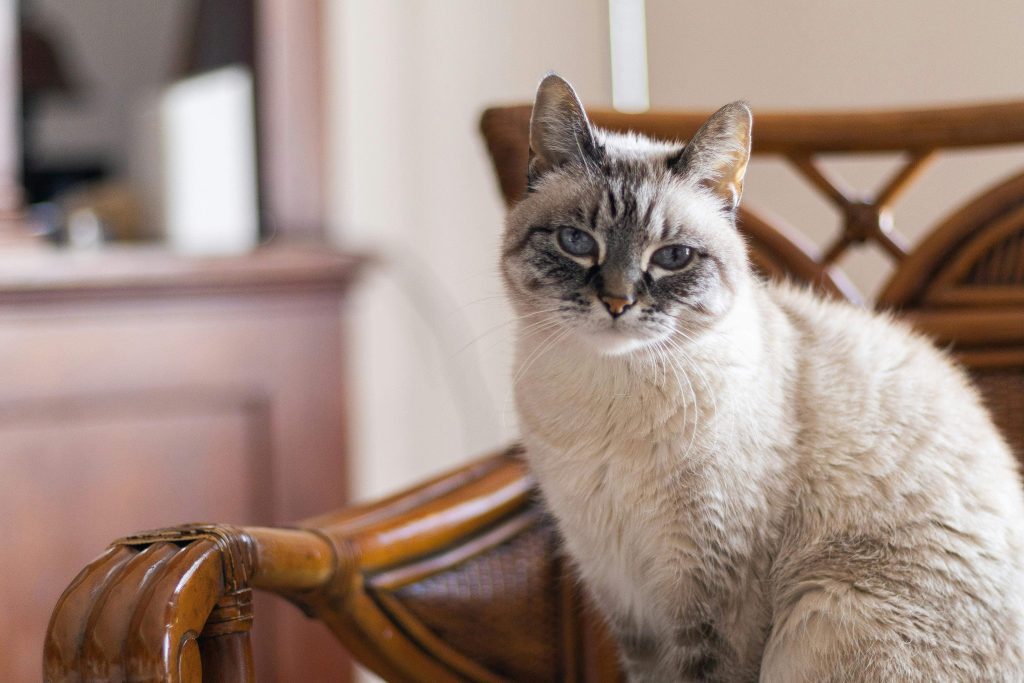
A lynx overlay adds distinct striping—an “M” on the forehead, cheek lines, ringed legs, and tail—on top of the pointed pattern. The body remains lighter, but the extremities have this tabby texture, creating extra depth.
Recognized by most registries, lynx Ragdolls are prized for their soft, layered look without altering the traditional point structure.
Recommended Post
Lynx Point (Tabby) Ragdoll Cats – Appearance, Genetics, & More
Tortie Ragdolls (Tortoiseshell Overlay)
Torties blend patches of red or cream into another point color, often seal or blue. Because the tortie gene is X-linked, most are female, with mottled faces and paw pads that can be multicolored. The overlay doesn’t replace the point pattern—it enriches it with unpredictable, one-of-a-kind markings.
Tortie-Lynx Ragdolls
This rare combo merges tortie patching with lynx striping, producing highly complex markings that shift with age. It’s unpredictable in breeding but a visual showstopper—ideal for owners who want a truly unique coat.
Mink Ragdolls

Minks have richer, more even mid-tone coats and aqua to greenish-aqua eyes. Unlike traditional pointed kittens (born pale), minks are born with visible color that deepens quickly.
TICA now recognizes minks, but other registries differ — always check current variety lists before buying. As one breeder puts it, “Minks can surprise you — their color seems to bloom almost overnight.”
Recommended Post
Mink Ragdoll Cat Guide – Patterns, Traits, Price & Care Tips
Sepia & Solid Ragdolls

Sepias are the darkest variant—deep, warm tones with minimal contrast between body and points, and eye colors from gold to green. Solids (including blue-eyed whites) lack the point restriction entirely.
Many registries classify these as separate or non-showable, but they remain sought-after for their plush coats and bold coloring.
Recommended Post
Sepia Ragdoll Cat Guide – Variations, Traits, Price & Photos
How Ragdoll Colors Change Over Time
Yes, most Ragdoll kittens change color dramatically as they grow. Born almost pure white, they develop darker “points” on cooler body areas (ears, mask, tail, paws) between 2–8 weeks. By 6–18 months, most have their adult look, though subtle deepening can continue until age three.
Quick timeline: Newborn: mostly white → 2–8 weeks: points emerge → 3–6 months: strong contrast → 6–18 months: adult look → up to 3 years: slight changes.
Seasonal shifts may cause winter darkening and summer lightening, while seniors can show gentle fading. Extreme temperatures during kittenhood can even accentuate or suppress point development. To track changes accurately, photograph monthly in midday indirect light with a neutral background, same camera distance, and a small color card for white balance.
Log age, temperature, and notes, and compare with parent photos for prediction. Your patience will pay off — every Ragdoll’s color journey is a unique work of art.
Identifying Your Ragdoll’s Color & Pattern
Start with the pattern — pointed, mitted, bicolor, or van — by checking the mask, paws, and chest. Next, determine the base color from the darkest points (ears, nose, tail) and compare with a Ragdoll color chart. Then look for modifiers: lynx stripes, tortie patches, or dilute tones.
For tricky pairs, check paw pads and undertones: seal → black to dark brown nose leather; chocolate → warmer brown nose leather with softer brown undertones. Blue → slate gray pads; lilac → paler, pinkish pads with a rosier tone.
Remember, kittens may look lighter — colors can take up to three years to settle, and lighting changes perception. Recheck at 8 weeks, 6 months, and 1 year for accuracy. If a seller won’t share updated photos at 12+ weeks, ask about a refund policy or walk away — color isn’t everything, but it’s a key trait.
Recommended Post
Final Thoughts
A Ragdoll’s look is the sum of base color, pattern, and modifiers, but the heart of your choice lies in what you want from a companion. If you’re show-focused, stick to registry-accepted colors/patterns and verify paperwork.
Love novelty? Research minks, sepias, or rare dilutes—but never compromise on health testing. For pure companionship, prioritize temperament, socialization, and breeder ethics over any shade.
Kitten color ≠ , adult color — photo and pedigree comparison is essential. Choose the look you love, but let health and personality be the deal-breakers.
Founder of Cats Question, a veterinarian (DVM), and lifelong cat enthusiast with hands-on experience in feline care. Passionate about helping cat owners through expert-backed, compassionate advice inspired by years of living and learning alongside cats.
